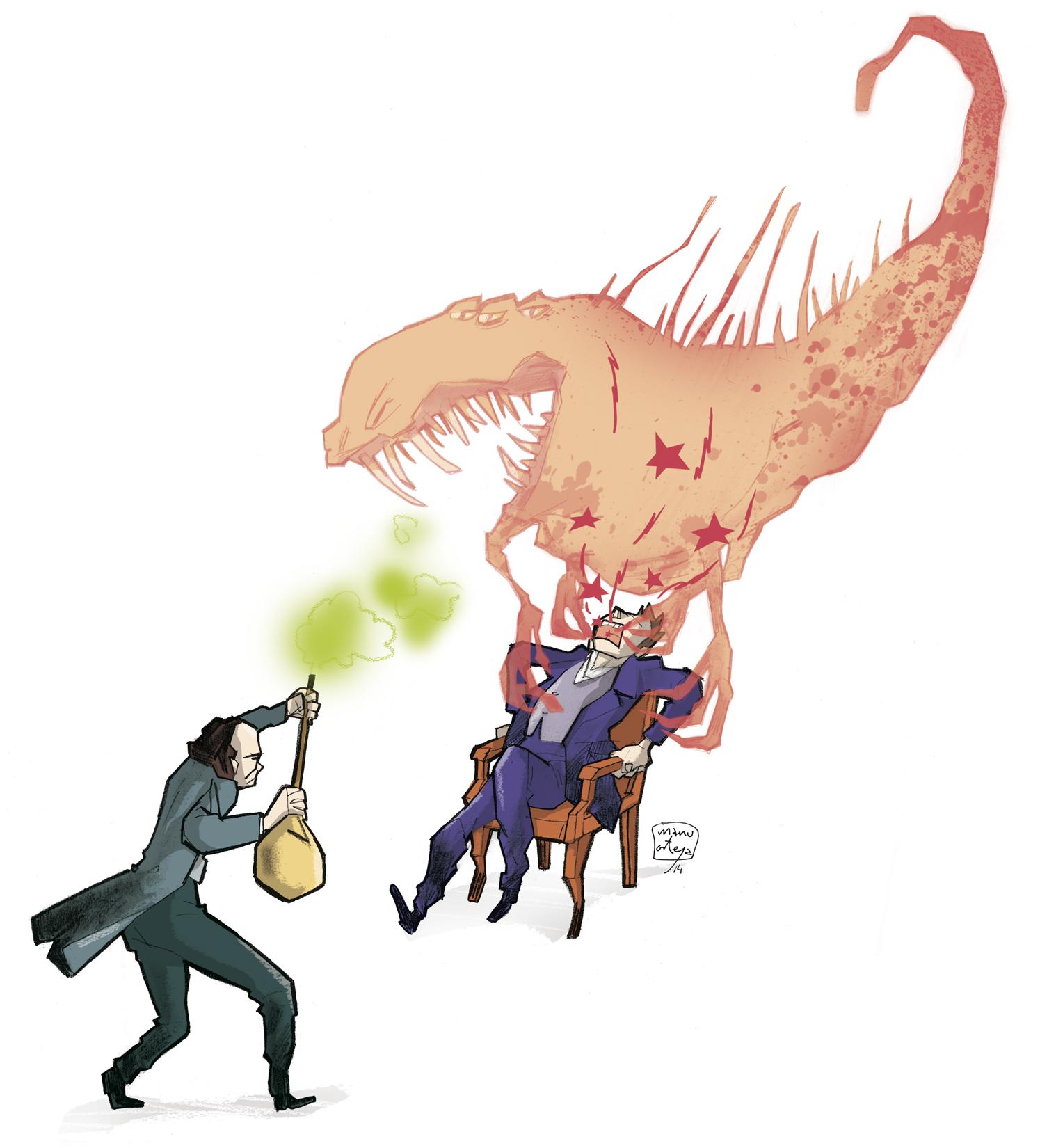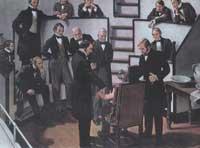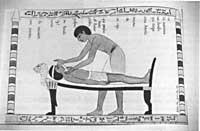Horace Wells, anesthesia discoverer... and victim
2014/07/01 Etxebeste Aduriz, Egoitz - Elhuyar Zientzia Iturria: Elhuyar aldizkaria

Horace Wells was attentive to the show. On stage a spectator came out of his side. He breathed gas and suddenly looked at another viewer. It seems that the unknown was his greatest enemy. He jumped from the stage and launched to look for him. The innocent victim, frightened, fled at full speed. The volunteer, affected by the gas, tried to chase him, stumbling among the chairs. The public shouts and applauds.
At that time the recreational use of nitrous oxide (laughter gas) was quite common. Gardner Quincy Colton performed shows with this gas, among them on December 10, 1844. In the end, when the human victim escaped and the volunteer returned to his chair, Horace Wells realized that the leg was injured. However, the volunteer did not feel any pain until the effect of gas was passed. Wells saw it clear: that gas eliminated the pain and that was wonderful.
In fact, Horace Wells was a dentist. And in those times when there was no anesthesia, going to the dentist was not a pleasant experience. Wells himself suffered, moreover, from the pain that affected his clients, to the point that, after a particularly painful intervention, he refused to work for several weeks. He could not endure so much pain to patients. And on more than one occasion he was about to leave the trade.
Therefore, seeing that nitrous oxide eliminated the pain did not waste time. The next morning he asked Colton to bring a gas bag. The first test of itself. He asked the dentist friend Riggs to remove a skewer. With the help of Colton, he took the gas and started the yew. "This is the greatest discovery of history!" When he realized that he did not feel any spicy cry.
He learned from Colton how to give gas to patients. They filled a bladder with gas and, through a wooden tube, gave it to the mouth while the nostrils were closing. The following month Wells tested with a dozen patients, working perfectly. Then, William Morton, a student and fellow of Wells, suggested that he make a public exhibition. With suspicion, but he accepted Wells.
In the Massachusetts General Hospital room a good number of students and doctors gathered to attend the Wells exhibition. But that day Wells was not fortunate enough to accompany her and things didn't go as they expected. Somewhere, the gas was insufficient, and when the patient started to start the yew, painful complaints were evident. Although he later acknowledged that the patient felt less pain than normal, doctors and the public there considered him a fraud. Misused and destroyed he left that exhibition. And the head could not rise.
A year later, in 1846, he was his master in the same room in which Morton was going to achieve success with another gas. Morton calls his substance "Letheon" and so patented it. But basically this substance was ether (mixed with a little orange oil) and everyone knew, so the patent did not serve him much.
However, Morton was proclaimed as a discoverer of anesthesia. Wells opposed him and Charles T, former professor of Morton. Jackson. Jackson said he taught himself that ether could be used as an anesthetic. Jackson and Morton started a big battle.
For his part, Wells decided to travel to New York to test if there he achieved greater recognition and success. Start of tests with chloroform. By then it was already proven that the substance was also effective anaesthetic. But Wells fell at the mercy of chloroform until he lost his head. On the day he turned 33, he went out into the street under the influence of chloroform and gave acid to two prostitutes.
He was transferred to prison. There, as the effect of the drug passed, he realized what he did. He could not bear it. As soon as he could he committed suicide by cutting a leg artery with beard knife. He did not feel pain thanks to the chloroform he had taken before.

Gai honi buruzko eduki gehiago
Elhuyarrek garatutako teknologia





